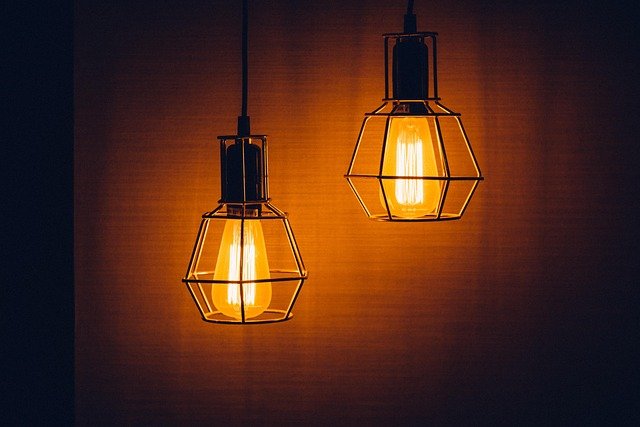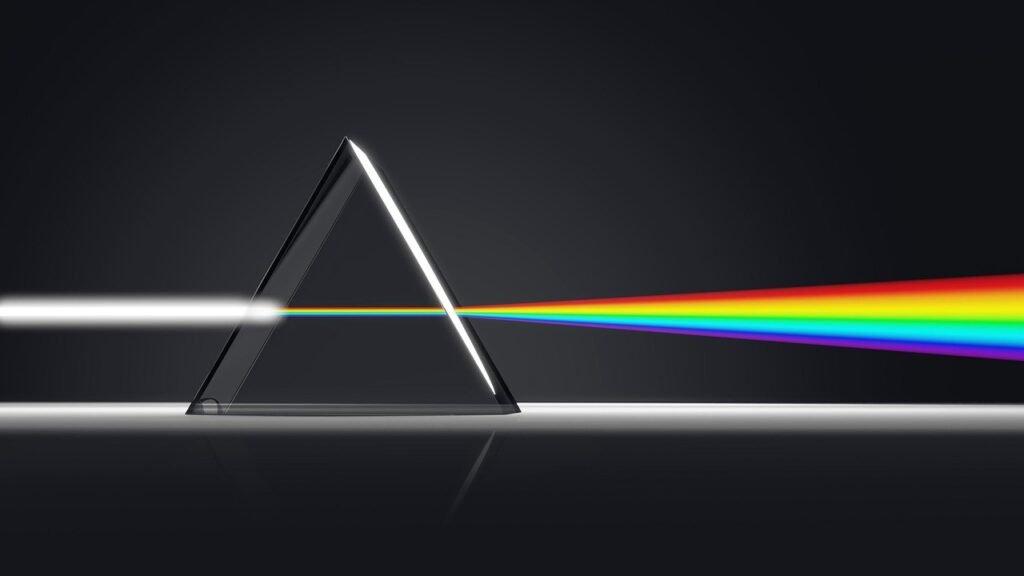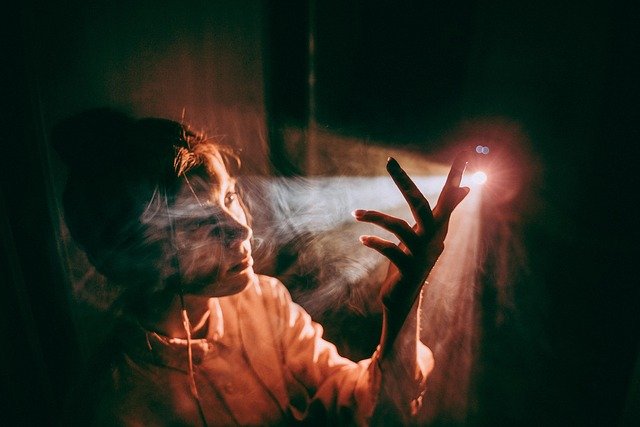Light is all around you. It’s the reason you can see your favourite book, the smile on a friend’s face, or the colours in a sunset. But have you ever wondered what light actually is? Is it a thing you can touch? Is it a wave, a particle, or both? And how can the same light that makes a rainbow also power a laser?
Light may seem simple — you switch on a lamp, and the room brightens. But behind that everyday magic is a world of fascinating science. Light travels across space, bounces, bends, splits into colours, and even behaves differently depending on what it hits. It is not just something your eyes use; it’s also something plants, animals, and technology depend on.
In this guide, we’re going to explore light in the simplest, clearest way possible. We’ll see how it moves, how it makes colours, how it creates rainbows, and how scientists have learned to shape it into powerful tools like lasers. No confusing words, no dry theory — just a clear journey from the light in your window to the beams that power space exploration.
What Light Really Is
Light is a form of energy. You can’t hold it in your hands, but you can see what it does. It’s made up of tiny particles called photons, and at the same time, it behaves like waves in water. This might sound strange — how can something be both a particle and a wave? But that’s one of the most interesting things about light.
When we say light is a particle, we mean it comes in little packets of energy — photons — that travel through space. When we say it’s a wave, we mean it moves in a pattern, with peaks and dips, like ripples moving across a pond. Both ideas are true at the same time, and they help explain different things light can do.
Light Travels Fast
Light is the fastest thing in the universe. It travels at about 300,000 kilometres every second in empty space. That means in one second, light could go around the Earth more than seven times.
Because it moves so quickly, when you turn on a lamp, the light fills the room almost instantly. But even though it’s fast, it still takes time to travel long distances — for example, light from the Sun takes about 8 minutes to reach Earth. That means when you see sunlight, you’re looking at light that left the Sun eight minutes ago.
Light Needs No Road
One amazing thing about light is that it doesn’t need air, water, or anything else to travel through. It can move through empty space — that’s why sunlight can reach us from millions of kilometres away in space.
Sound, by contrast, can’t travel through empty space — it needs air or another material to carry its waves. This is why in space, astronauts can see things happen but can’t hear them unless they’re using radios.
Straight Lines — Until Something Gets in the Way
Light usually travels in straight lines. You can see this when sunlight comes through a window and makes a sharp shadow. But when it meets something, light can change direction. It can:
- Reflect (bounce off a surface, like a mirror)
- Refract (bend when it moves from one material to another, like from air into water)
- Scatter (spread out in many directions, like sunlight in a cloudy sky)
These changes are what make light so interesting — they create rainbows, illusions, and even the way we see colours.
A Quick Light Experiment
You can try this at home:
- Take a flashlight and shine it straight at a mirror.
- Notice how the beam bounces back.
- Now, aim the flashlight at the mirror from an angle — the light will bounce off at the same angle.
This is reflection in action, and it’s why periscopes and some cameras work the way they do.
Light and Colour – The Secret Inside Sunlight

The sunlight we see every day might look white, but it’s actually made up of many colours mixed together. When you pass white light through a glass prism, it splits into a band of colours — red, orange, yellow, green, blue, indigo, and violet. This set of colours is called the visible spectrum.
Each colour has a different wavelength — that’s the distance between one peak of the light wave and the next. Red light has the longest wavelength, and violet has the shortest. Your eyes see each wavelength as a different colour.
Why We See Colours in Objects
When light hits an object, some colours are absorbed, and others bounce off. The colours that bounce back are the ones you see.
For example:
- A red apple absorbs most colours of light but reflects red back to your eyes.
- A green leaf reflects green wavelengths and absorbs the rest.
- A white shirt reflects almost all colours, which is why it looks bright.
- A black t-shirt absorbs almost all light, which is why it gets hot in the sun.
Why the Sky is Blue
The blue colour of the sky is actually caused by scattering. Sunlight is made of all colours, but when it passes through the atmosphere, tiny particles in the air scatter shorter wavelengths — like blue — more than longer wavelengths like red. This scattered blue light comes at you from all directions, making the whole sky look blue.
At sunrise and sunset, sunlight travels through more of the atmosphere. The blue light gets scattered away, leaving behind reds and oranges — that’s why the sky changes colour.
How Rainbows Form
A rainbow happens when sunlight passes through water droplets in the air after rain. Each droplet acts like a tiny prism:
- Refraction – Light bends as it enters the droplet.
- Reflection – It bounces off the inside surface of the droplet.
- Refraction again – It bends again as it leaves the droplet.
This double bending and single bounce separate the sunlight into its colours, and your eyes see them arranged in an arc in the sky.
Try It Yourself – Make a Mini Rainbow
You can make your own rainbow at home:
- Fill a clear glass with water.
- Place it on the edge of a table in bright sunlight.
- Hold a white sheet of paper so the sunlight passes through the glass and onto the paper.
If the angle is right, you’ll see a faint rainbow — the glass of water is bending and splitting the light just like raindrops do in the sky.
Light and Materials – Transparent, Translucent, and Opaque

When light hits something, it can pass through, get partly through, or get blocked completely. The way light interacts with a material depends on the material’s properties.
Transparent Materials – Light’s Open Door
Transparent materials let most of the light pass through clearly. This is why you can see right through them. Glass windows, clear plastic, and clean water are good examples.
When light travels through these materials, it might bend slightly — a process called refraction — but you can still see the other side clearly. That’s how eyeglasses and camera lenses work: they bend light in a controlled way to help your eyes focus better.
Everyday example: Looking out your window and seeing the street clearly is possible because glass is transparent.
Translucent Materials – Light, But Blurry
Translucent materials let some light through, but they scatter it. You can’t see a clear image through them. Frosted glass, wax paper, and thin curtains are examples.
When light passes through a translucent material, it spreads out in many directions. This is why you can tell there’s something behind frosted bathroom glass, but you can’t see details.
Everyday example: The glow of light through a lampshade — you see the light, but not the bulb clearly.
Opaque Materials – Light’s Stop Sign
Opaque materials block light completely. Wood, metal, and stone don’t let any light through. When light hits them, it’s either absorbed or reflected.
If it’s absorbed, the object might warm up (like a black car in the sun). If it’s reflected, you see the object’s colour or a shiny surface, depending on the material.
Everyday example: The solid door in your house stops light from one room spilling into another.
Why This Matters in Daily Life
Understanding how light interacts with materials helps explain so many things:
- Why sunglasses are tinted (to reduce the amount of light passing through to your eyes).
- Why car headlights have clear covers (to let maximum light through) but use reflectors behind the bulb to direct the beam.
- Why artists choose matte or glossy paints — matte surfaces scatter light, glossy surfaces reflect it sharply.
Try It Yourself – Light Test
- Gather a few objects — a clear plastic bottle, a frosted plastic container, and a book.
- Shine a flashlight at each one in a dark room.
- Notice how the light passes through, scatters, or stops completely.
You’ve just sorted them into transparent, translucent, and opaque — the three basic ways materials interact with light.
Bending Light – Refraction

Refraction happens when light changes speed as it moves from one material to another. This makes it bend. You’ve probably seen this if you’ve ever put a straw in a glass of water — it looks bent or broken where it meets the surface.
Why does this happen? Light travels fastest in empty space, slower in air, and even slower in water or glass. When it changes speed, it changes direction, just like a runner turning slightly when hitting softer ground.
Refraction is the reason we have magnifying glasses, eyeglasses, and even cameras — lenses are shaped pieces of glass or plastic that bend light so we can focus it where we want.
Focusing Light – Lenses
A lens is a transparent object that refracts light in a controlled way. There are two main types:
- Convex lenses (thicker in the middle) bend light rays inward, bringing them to a point. These are used in magnifying glasses and cameras.
- Concave lenses (thinner in the middle) spread light rays outward. These are used in glasses for people who are short-sighted.
By combining different lenses, scientists and engineers can zoom in on planets with telescopes or examine tiny cells with microscopes — all by bending and focusing light.
Controlling Light – Mirrors
While lenses bend light, mirrors reflect it. The angle at which light hits the mirror is the same angle it bounces off — this is the law of reflection.
Flat mirrors give you an image the same size as the object. Curved mirrors can make images look bigger, smaller, or even upside down, depending on their shape. This is why funhouse mirrors at fairs make you look tall, short, or wavy.
Mirrors are also used in technology — from periscopes in submarines to reflecting telescopes used by astronomers.
Concentrating Light – Lasers
A laser is a special type of light. Instead of spreading out in all directions like a flashlight, laser light travels in a very tight, focused beam. This is because all the light waves in a laser move in the same direction and have the same wavelength — they are “in sync.”
Lasers are incredibly useful:
- In medicine, they can perform delicate eye surgery.
- In technology, they read information from CDs and Blu-rays.
- In science, they measure distances with extreme accuracy.
Because laser beams stay focused over long distances, they can even be used in space communication.
Try It Yourself – Bending Light at Home
- Fill a clear glass halfway with water.
- Put a spoon in the glass and look at it from the side.
- Notice how it appears bent at the water’s surface.
That’s refraction in action — the same science behind lenses, cameras, and even rainbows.
Light Keeps Life Going

Without light, life as we know it could not exist. It’s more than just what helps us see — it’s a source of energy, a guide for nature’s rhythms, and a driver of technology.
Light and Plants – The Earth’s Green Factories
Plants are nature’s powerhouses, and sunlight is their main fuel. Through photosynthesis, plants absorb sunlight and use it to turn water and carbon dioxide into food (sugars) and oxygen.
This process does more than feed plants — it produces the oxygen we breathe. In fact, every breath you take is thanks to sunlight’s work in the leaves of trees, grass, and even tiny ocean plants.
Without sunlight, plants would stop producing food, animals would lose their main food sources, and the entire food chain would collapse. Light isn’t just nice to have — it’s the starting point for life on Earth.
Light and Animals – Nature’s Clock
Animals use light in many ways:
- Navigation – Birds migrate by sensing changes in daylight. Sea turtles use the light of the moon to find the ocean after hatching.
- Daily Routines – Many animals sleep at night and are active during the day because of natural light patterns, while others (like owls) do the opposite.
- Finding Food – From eagles spotting prey in daylight to deep-sea creatures glowing in the dark to attract dinner, light guides survival.
Light is nature’s timekeeper — without it, life’s schedules would be thrown into chaos.
Light and People – More Than Vision
For humans, sunlight does more than light our way:
- Health – Sunlight helps our skin make vitamin D, which keeps our bones and immune system strong.
- Mood – Bright natural light can lift our mood and energy.
- Technology – From photography to fibre optics, light is central to our daily tools.
This is why too little sunlight — like during long winters — can make some people feel low in energy or mood.
Light as Energy – Solar Power for the Future
Sunlight is also a renewable energy source. Solar panels capture photons from sunlight and turn them into electricity. This process doesn’t produce harmful emissions, making it one of the cleanest energy options available.
Solar power is used to:
- Power homes and schools
- Run satellites and space stations
- Charge electric vehicles
- Provide electricity in remote areas where other power sources are hard to reach
As technology improves, solar energy is becoming more efficient and affordable, making it a big part of our future.
How Debsie Helps Kids Understand Light
At Debsie, we believe science isn’t something you just read about — it’s something you do, see, and feel. Our lessons are designed to turn topics like light from “complicated” to “wow, that makes sense!”
Learning Through Doing
When we teach light, we make sure kids get to experiment and see the results for themselves. In our classes, they might:
- Use a prism or a glass of water to split sunlight into a rainbow.
- Explore how shadows change throughout the day by measuring them outside.
- Bounce light off mirrors to make a homemade periscope.
- Test how sunglasses block certain wavelengths of light.
By working with light directly, children remember it better and start to own their learning.
Connecting Light to Everyday Life
We don’t stop at “this is how light works” — we show kids why it matters. They learn how light is used in art, photography, medicine, energy, and even in space exploration. We connect it to their world: the colours in their clothes, the glow of their phone screen, the solar panels they might see on rooftops.
Expert Teachers Across All Subjects
Because Debsie has expert teachers in every subject — physics, maths, biology, chemistry, history, geography, environmental science, and more — kids can explore light from many angles. They can learn the physics of refraction in one class, the history of the first telescopes in another, and the role of sunlight in growing crops in environmental science.
This cross-subject approach helps them see how knowledge connects, which makes learning richer and more meaningful.
Building Curiosity and Confidence
When kids understand light, they don’t just get a science fact — they gain a tool for asking better questions. “Why does the sunset look red?” “How do lasers work?” “Can I make my own rainbow?” These questions keep them exploring and make them confident learners.
At Debsie, we guide that curiosity that helps in learning and so it becomes a lifelong skill.
Light and the Future – Shaping the World Ahead

Light has been part of life on Earth since the very beginning, but in the future, it will be one of our most powerful tools for solving problems, exploring new worlds, and improving how we live. It is both ancient and cutting-edge — the same sunlight that warmed the first humans now powers satellites, lasers, and technologies that didn’t exist even a generation ago.
Light in Medicine – Healing With Beams
Light is transforming how we care for our health. Doctors can now use light in ways that are precise, safe, and life-changing:
- Laser eye surgery reshapes the cornea with pinpoint accuracy, often in just minutes, restoring clear vision without glasses.
- Phototherapy uses specific wavelengths of light to treat newborn jaundice, skin conditions, and even seasonal depression.
- Endoscopes send light deep inside the body through thin fibre-optic tubes, allowing doctors to see and diagnose without major surgery.
In each of these, light is not just helping us see — it’s helping us heal.
Light in Communication – Carrying Our Voices and Ideas
If you send a message to a friend across the world, there’s a good chance it travels through fibre-optic cables — hair-thin strands of glass that carry pulses of light. These light signals can travel thousands of kilometres without losing strength, moving faster than anything else we can send.
This is why we can video call, stream movies, and share ideas instantly — light is literally the messenger of the modern world.
Light in Space Exploration – Looking Further, Learning More
Our understanding of the universe depends on light. Telescopes like the James Webb Space Telescope collect light that has travelled for billions of years, letting us see galaxies from the early universe. Space probes use lasers to measure distances across vast emptiness with incredible accuracy.
In the future, scientists are even considering using giant laser arrays to push spacecraft to other star systems — turning light into a rocket engine.
Light in Clean Energy – Powering a Greener Planet
As we work to protect our planet, sunlight will be one of our greatest allies. Solar panels are becoming cheaper, lighter, and more efficient, able to capture energy even in low light. Some designs can be printed like paper or built into windows, turning entire buildings into power generators.
In many communities without traditional power grids, solar panels are already bringing clean, affordable energy — powered by the same sunlight that grows food and warms the Earth.
Recap – The Journey of Light
In this guide, we’ve seen how light is both simple and extraordinary. We’ve learned that:
- Light is energy that behaves as both waves and particles.
- It travels in straight lines but can reflect, bend, or scatter.
- White light contains all colours, and rainbows reveal them.
- Materials can be transparent, translucent, or opaque.
- Lenses and mirrors shape light for glasses, telescopes, and cameras.
- Lasers are tightly focused light beams with incredible precision.
- Sunlight powers life, controls natural rhythms, and fuels renewable energy.
Conclusion
Light is one of the most fascinating forces in our world — it helps plants grow, powers our technology, shapes our art, and even carries our words across the planet. From the gentle colours of a rainbow to the precision of a laser, light connects nature, science, and human invention in ways we often take for granted.
When children understand how light works, the world around them changes. Sunsets are no longer just pretty — they are lessons in scattering. A magnifying glass is no longer just a toy — it’s a tool that bends and focuses energy. A rainbow isn’t just magic — it’s a beautiful dance of reflection and refraction.
At Debsie, we make these discoveries accessible, exciting, and unforgettable. We give children the tools to explore, experiment, and see science in action every day. And when a child learns in this way, they don’t just gain knowledge — they gain curiosity, confidence, and the joy of understanding.
If you’re ready for your child to see the world in a whole new light, you can start with a free trial class today.
👉 Sign up here and let the learning adventure begin.
Read next:
